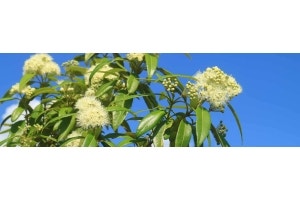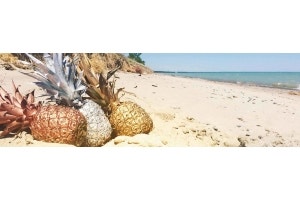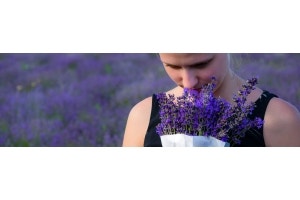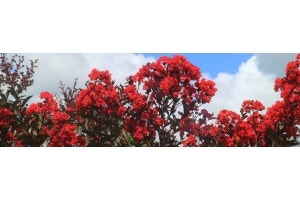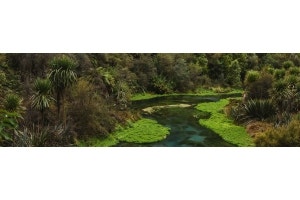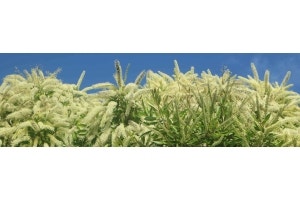
Happy St Patrick's Day - 17 March!
Whatever your belief when it comes to religion, St Patrick's Day has become a worldwide excuse for a good party, to celebrate Irishness in all its many forms. It's also a day to celebrate what makes Ireland Irish - and a big part of that is the green-ness of the country. It's not known as the Emerald Isle for nothing!I close my eyes and picture the emerald of the sea
From the fishing boats at Dingle to the shores of Dunardee
I miss the river Shannon and the folks at Skibbereen
The moorlands and the midlands with their forty shades of green
Forty Shades of Green
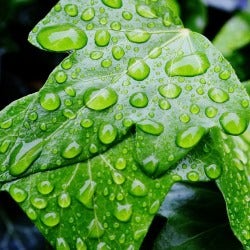 Johnny Cash knew what makes Ireland special - all that lush green landscape.
Ireland gets over 2000mm of rain a year. To put that into context, it's roughly what tropical Cairns gets each year (and half that of its neighbour Tully, 'the wettest place in Australia').
Johnny Cash knew what makes Ireland special - all that lush green landscape.
Ireland gets over 2000mm of rain a year. To put that into context, it's roughly what tropical Cairns gets each year (and half that of its neighbour Tully, 'the wettest place in Australia').It's about twice what most of the east coast enjoys in a good year. We've had plenty at our Sunshine Coast nursery this past couple of weeks so we hope you've been lucky too. 2000mm is also the amount of rainfall that places like Bourke, Kalgoorlie, and Alice Springs would receive in a decade. (See how your local rain compares at B.O.M) Despite our rather more parched climate, you can recreate some of that lush Irish greenery, with a smart choice of plants indoors and out.
The plant traditionally associated with St Patrick's Day is the shamrock - a three-leaf clover representing the Holy Trinity (though you're more likely to find lookalike Oxalis on sale instead.) You might be fortunate enough to discover a four-leaf clover, to bring 'the luck of the Irish'. Shamrock clover is a first-rate forage plant and great pollinator-attractor, and acts as a green manure to replenish soil - but it doesn't make for a very eye-catching garden plant. We've put together a selection of our favourite all-green plants to give you some ideas - and not a hedge in sight!

Green Feature Plants
These feature plants will give you big green leaves, big size, big impact in your garden - and despite their jungly looks, are easier to look after than you'd think. Fatsia is a gorgeous foliage plant for cold-climate and warmer gardens, forming a big bold bush of deep green hand-shaped leaves. There's bonus white flower clusters that turn into black berries on mature plants. Acanthus is very striking, and can be seen in many public spaces in Melbourne, demonstrating its cold-hardiness. Tall foxglove-like spikes of purple and white flowers emerge on mature plants in sunshine, but this feature foliage will grow happily in shade too. Monstera - the swiss cheese or fruit salad plant - is a favourite indoor greenery, and if you have a tropical garden it will thrive in the warmth and humidity. More rugged, and on a smaller scale, in Philodendron Xanadu, seemingly happy in sun or shade, cool or warmth. If you have a subtropical garden - or a sheltered balcony - these will flourish outside. In cooler climates they're best treated as indoor plants, where they'll add luxuriant greenery to your home and work spaces.
 To give you more of that lush jungly look, tall-growing tiger grass is a fantastic screening plant as well as an accent or feature planting. It won't run amok like bamboo, which means you can plant it amongst your mixed flower beds. Zamia - cardboard palm - will give you the feel of lush greenery even in dry situations, those felted herringbone leaves create interesting shadows and shapes as well as holding onto any precious moisture that's around. Cardboard palms are a great choice for low-rainfall areas to get that big leafy look with little water.The euphorbia family is a large and very varied one, and the spurge euphorbias are some of the most loved herbaceous garden plants. They burst forth each year in shades of green from metallic purple-blue to zesty lime - like Euphorbia Baby Charm, a green flower to create a beautiful bouquet. Indoors or out, in cold or heat, in the garden bed or a patio pot, Cordyline Kaspar will look green and pristine with very little effort or attention from you.
To give you more of that lush jungly look, tall-growing tiger grass is a fantastic screening plant as well as an accent or feature planting. It won't run amok like bamboo, which means you can plant it amongst your mixed flower beds. Zamia - cardboard palm - will give you the feel of lush greenery even in dry situations, those felted herringbone leaves create interesting shadows and shapes as well as holding onto any precious moisture that's around. Cardboard palms are a great choice for low-rainfall areas to get that big leafy look with little water.The euphorbia family is a large and very varied one, and the spurge euphorbias are some of the most loved herbaceous garden plants. They burst forth each year in shades of green from metallic purple-blue to zesty lime - like Euphorbia Baby Charm, a green flower to create a beautiful bouquet. Indoors or out, in cold or heat, in the garden bed or a patio pot, Cordyline Kaspar will look green and pristine with very little effort or attention from you.

Green Grassy Plants
Grass - it's the ultimate green plant. Mowing a traditional lawn is either a calming zen meditation or a tedious unending task - either way, you can achieve a restful carpet of green with no mowing effort, by planting grassy groundcovers. They'll stay compact, cool, and soft-to-the-touch on bare feet. Dwarf Lomandra, mondo grass, Zoysia velvet grass (aka no-mow grass), and Cousin It will all create a lush verdant lawn effect, especially when planted en masse. A little weeding now and then, and an annual clip-over to keep them tidy is all that is required.

Green Groundcover Plants
These groundcovers will give you interesting texture, spreading outwards to form low evergreen carpets which need almost no care once established. These plants cover the soil surface, reducing weeds, keeping precious rainfall in, and cooling the roots of plants nearby. Creeping boobialla loves it at the breezy sandy seaside where it can knit together dunes.Canary ivy loves a shady frost free spot to create shelter for small birds. Ficus pumila loves it anywhere, indoors a pot contains its vigorous growth, outdoors in frost-free garden it's fast-growing and luxuriant.
Dichondra - kidneyweed - nestles between pavers and cascades over retaining walls. Ivy and Ficus pumila will also climb pergolas and fences too, to create living green walls in no time.
























